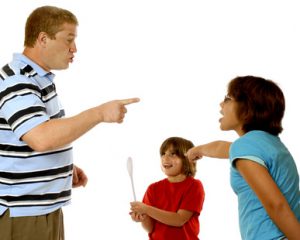Parenting Inuit Style
Did you know Inuit adults have an “extraordinary ability to control their anger”? I didn’t either; but anthropologist Jean Briggs spent years living with the Inuit people and reports that it is true. Inuit adults have an “extraordinary ability to control their anger.” That ability begins when parents teach their children to control their anger…and doing so in a rather unique manner. How do they do it? What’s so unique about the Inuit parenting style? An NPR article entitled How Inuit Parents Teach Kids to Control Their Anger describes three parenting strategies used to raise adults with an “extraordinary ability to control their anger.” Perhaps we can learn some important lessons from Inuit parenting.

First, Inuit parents do not shout or yell at young children. When adults yell at their child, it escalates the parent’s heart rate and impedes the child’s ability to think and process. In effect, a yelling parent shows a child what an adult tantrum looks like and teaches them to use similar behavior in solving problems in the future. In addition, yelling demeans the person being yelled at, even if that person is a child. Instead of yelling, Inuit parents focus on modeling calm behavior and calm problem-solving. They work to discover what has upset their child and contributed to them exhibiting problematic behaviors. We can take several positive actions from this lesson: 1) Treat your child with respect, even when you must discipline, 2) look for the underlying cause of their negative behavior (Why Do Children Misbehave?), and 3) model positive ways to control your own anger in the process. (For tips on reducing yelling, read Rewire Your Brain & Stop Yelling.)
Second, Inuit parents also use stories to teach consequences of inappropriate behavior, desired behaviors, and the values underlying appropriate behaviors. Inuit parents often used imaginative stories to teach. In fact, children learn through stories. The story of Pinocchio can teach a child the danger of lying and following the crowd. The story about “the boy who cried wolf” teaches a child the importance of being honest about needs and not creating drama. A story like A Child’s Fish Tale can teach the importance of limits and listening to parents. Stories teach important lessons and we can use them to teach our children about the behaviors we desire, the consequences of inappropriate behavior, and the values undergirding both. These stories can be imaginative stories or “real life stories.” They can be stories you tell from your experience, stories you make up to emphasize a point, stories you read (find stories that help children overcome various struggles and teach important lessons, check out the blog at Books that Heal Kids), or stories you watch through various media streams. Keep an eye out for the lessons you can learn in the stories around you…and tell them to your children.
Third, perhaps the most interesting of the parenting strategies, Inuit parents re-enacted the negative behavior to show the negative results. You may not do this in the same manner as the Inuit parent (How Inuit Parents Teach Kids to Control Their Anger), but you can still utilize this strategy. You can re-enact the negative behavior and results with puppets, stuffed animals, dolls, or even yourself to show the real-life consequences of their behaviors. However you choose to do it, let the parent play the role of the recipient of the negative behavior and the child play the role of the misbehaving party. Throughout the process, ask your child questions to help them understand the consequences of their behavior. Begin by asking your child to act out the role of one engaging in the negative behavior. “Why don’t you pretend to do that to the puppet?” As they do, think out loud with questions and statements like, “That hurts.” “Don’t you like me?” “I’m going to cry because that makes me sad.” “Why are you being so mean?” This is all done with a tone of playfulness until the misbehaving child becomes bored and stops repeating the drama.
Perhaps we can practice some of the Inuit people’s parenting style and raise a generation of children who have an extraordinary ability to manage their anger…and have some fun in the process.
-0 Comment-